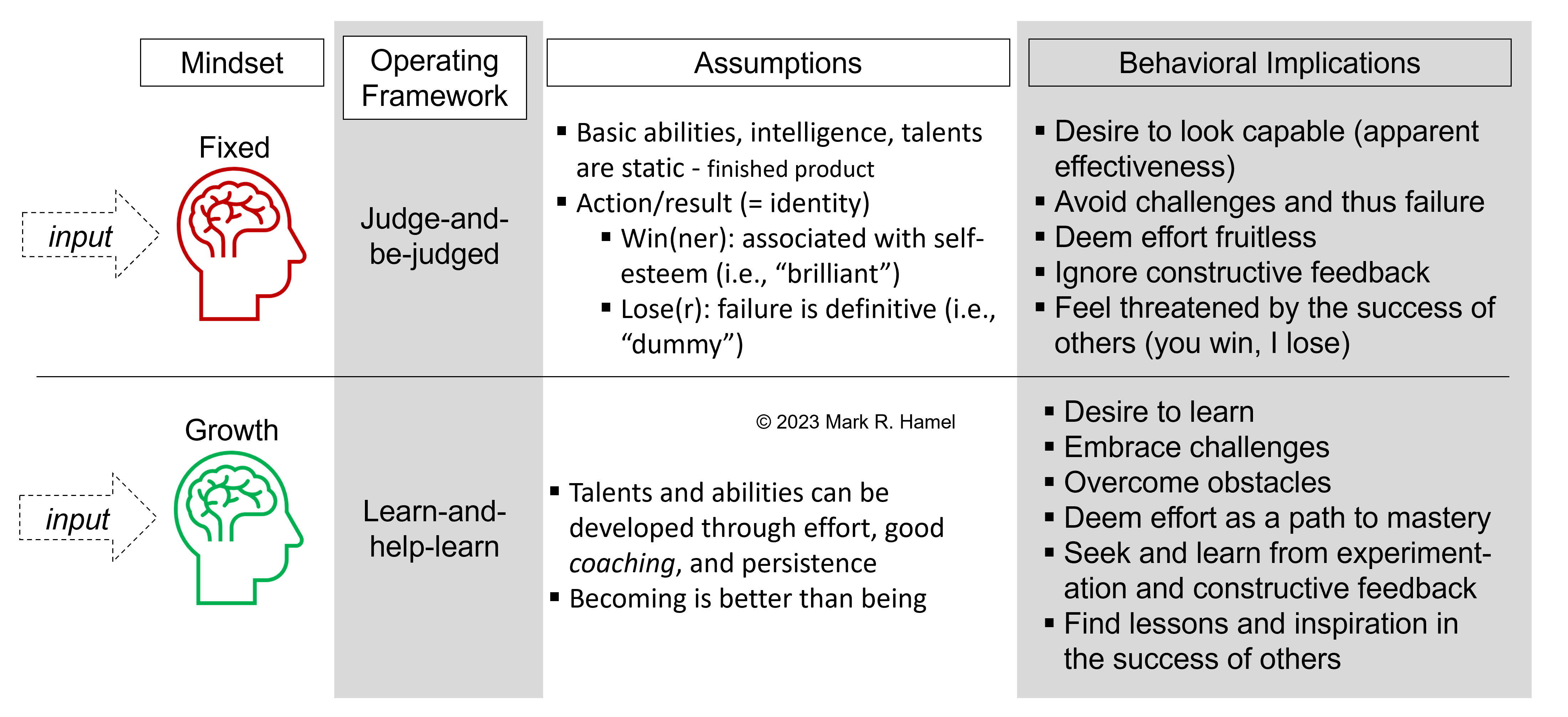
We can reasonably characterize the people-related principles of lean by three leadership behaviors:
- lead with humility,
- respect every individual, and
- foster learning, development, and engagement.
In my nearly thirty years of lean practice, I have never observed a sustainable lean transformation without ALL three. Maybe I am mistaken because I just haven’t seen enough or I have misinterpreted what I have seen, but I don’t think that is the case.
Culture versus Principles
Our behaviors are driven largely by our mindsets, assumptions, and systems. The first two are the principal elements of “culture.” Significant gaps between an organization’s culture and lean principles, whether recognized or not, generate a lot of friction. As the late, great Edgar Schein asked, “Will the cultural elements we have, the culture we have built, and the culture that is present today, help or hinder ‘the new way of working’ that the change goals define?” (Schein, Organizational Culture and Leadership, 5th ed., 297).
So, while this opens a vast horizon of things for us to explore, let’s focus here on a specific mindset, one that perhaps flies under out lean practitioner radar – growth mindset. This mindset, and its “anti-mindset,” fixed mindset, profoundly enable or extinguish the three leadership behaviors introduced above. Even if you have never heard of these mindsets, once outlined, you are likely to identify both (in that folks are somewhere on a continuum) in yourself and others. Incidentally, the work of Carol S. Dweck, Ph.D., specifically her book, Mindset: The New Psychology of Success, is an outstanding reference.
Growth and Fixed Mindsets
Let’s begin with a type of lean kryptonite, the fixed mindset. This mindset maintains an operating framework of “judge-and-be-judged.” Organizational psychologist Tasha Eurich terms this mindset, as does Dweck, “do-well.”
The underlying fixed mindset assumption is that people basically “have what they have.” One is either born smart or not, talented or not, and so on. Cue the parent or coach saying something really uplifting like, “You’ll never be a good (fill in the blank). You just don’t have it in you.” This breeds a certain fatalism, where it doesn’t make sense to put oneself out there in terms of effort, risk, and experimentation, where failure (or someone else’s success) just makes you less of a winner or more of a loser. Same dynamic if you accept constructive criticism and thereby admit that you have a seemingly unalterable “weakness.”
The fixed mindset is a cancer when it comes to development, teamwork, and obviously, the dynamic duo of problem solving and continuous improvement. A fixed mindset coach is an oxymoron. Why coach if other people can’t change? Why solicit feedback if you can’t change? The fixed mindset coach is more likely a variety of the “genius with a thousand helpers,” meaning the “coach” is inclined to simply tell the coachee what to do (because clearly the coachee is incapable of figuring it out on their own).
Contrast the fixed mindset with transformational rocket fuel, the growth mindset. This mindset’s operating framework is “learn-and-help-learn.” It rejects the gravitational pull of apparent effectiveness or apparent success (social media, anybody?!?), and instead encourages continuous improvement. It is wholly consistent with the Toyota notion of challenge, courage, and creativity. Growth mindset is about developing oneself and others and improving the business. The lean practitioner knows that this will require great persistence, good coaching, and high effort. Growth mindset respects both means and results, eschewing the tyranny of solely management by objectives (MBO).
Closing the Mindset Gap
Can we move folks from the fixed side of the continuum towards the growth side? Of course, provided we establish what Dweck (Mindset, 141) calls a growth-mindset environment, which includes at least four things:
- “presenting skills as learnable,”
- “Conveying that the organization values learning and perseverance, not just ready-made genius or talents,”
- “Giving feedback in a way that promotes learning and future success,” and
- “Presenting managers as resources for learning.”
Leaders can employ these actions within the context of the work systems (i.e., continuous flow), improvement systems (i.e., improvement kata and daily kaizen), and management system (i.e., gemba walk leader standard work and 1-on-1s). The leader can employ different levers, ranging from the subtle to the more obvious. Role modeling by how one reacts to a critical incident is an example of the former. Formally designating growth mindset to be one of the standard assessment criteria within the one-up, one-down coaching process may be an example of the latter.
Simply put, the growth mindset is a metaphor and necessary agent for lean transformation. Even fixed mindset folks will spark lean implementation activity when they sufficiently fear an existential business threat, but it will never thrive unless and until they embrace humble learning, especially derived from constant experimentation, adjustment, and coaching. In other words, the lean leap is really a growth mindset leap.
